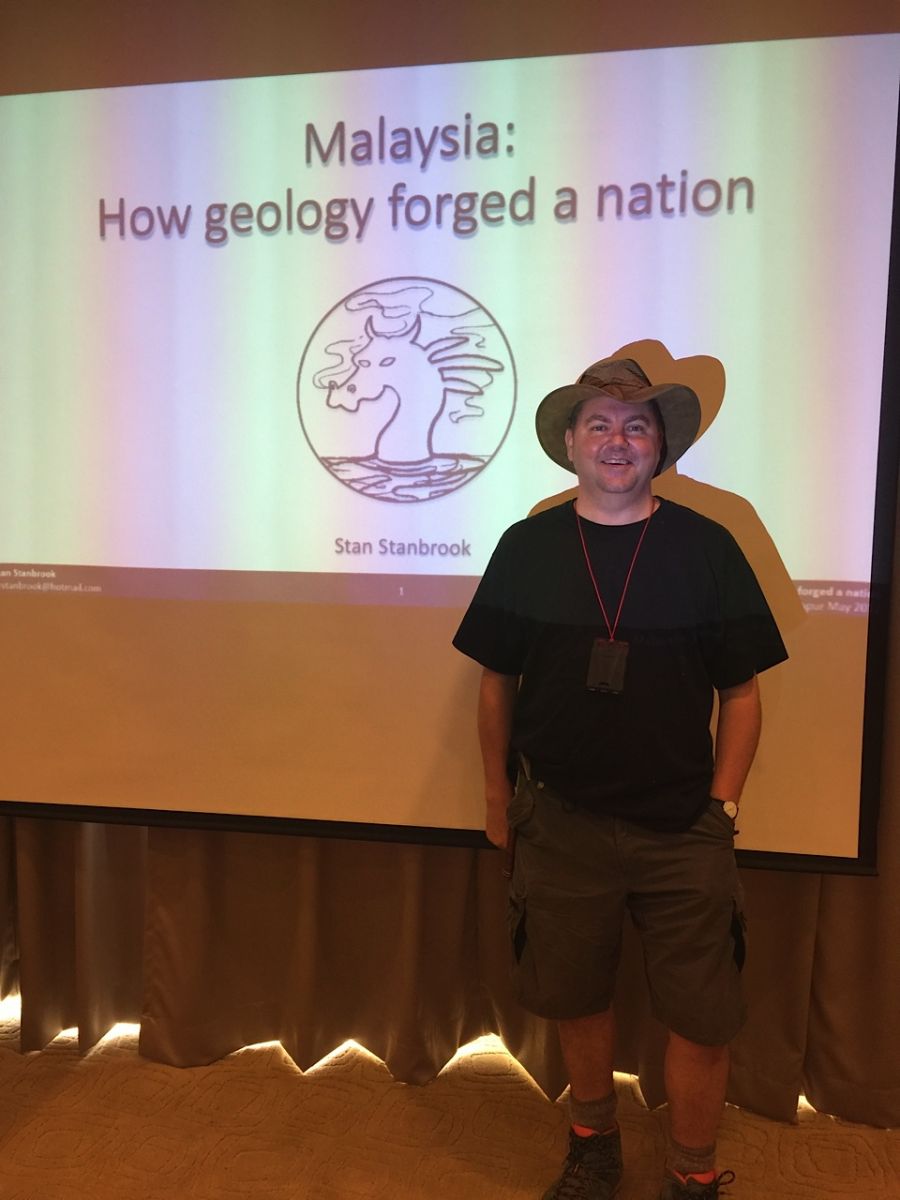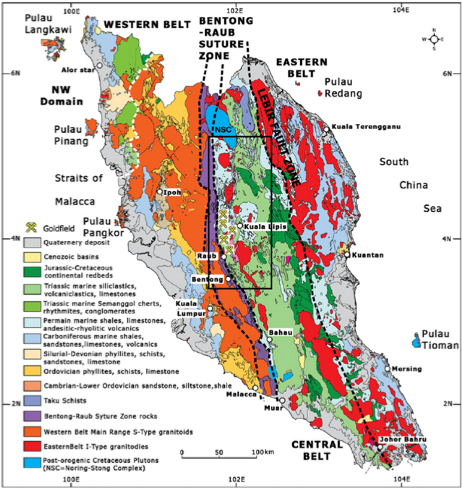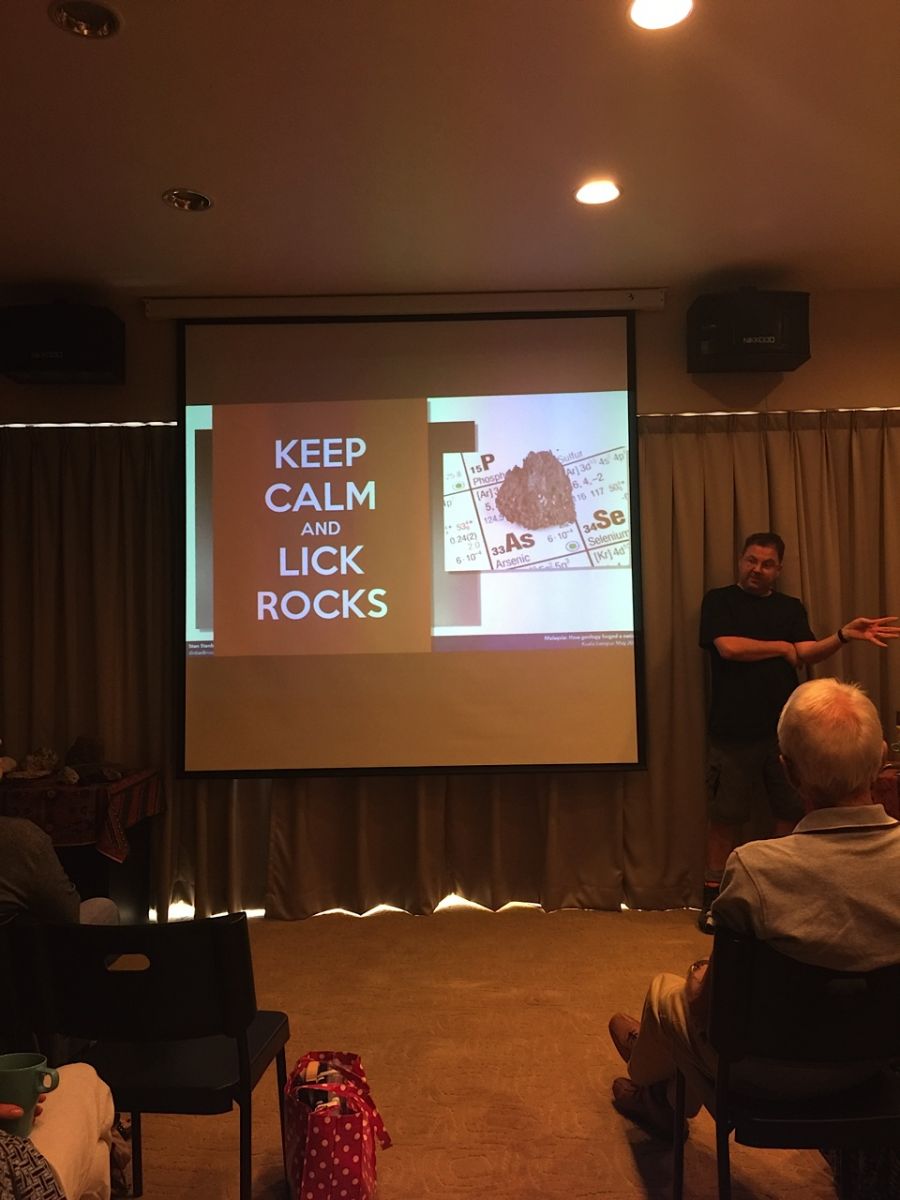
On Wednesday the 24th of May we had the pleasure to listen to the very entertaining explanation of Stan Stanbrook on: 'How Geology Forged a Nation'. Stan is Geological Advisor at Murphy Oil Comp. in Malaysia.
First he stated that all geologists are very good looking...
With some images of film posters he illustrated that fact! (Pierce Brosnam in 'Dante's peak', Sam Neill in 'Jurassic Park, Bruce Willis in 'Armageddon', John Cusack in '2012')
To execute a good job as a geologist you would of course need an outdoor outfit like boots and a hat, but also a geologist hammer, a compass and a magnifying glass. Most importantly an intensive study and years of practice in the field will get you there. Stan explained and demonstrated that you investigate rocks by sight, touch, sound and taste! But he advised his audience to not just lick any stone they'd find...
We cannot fail to notice that Stan is extremely passionate about his job which brings him and his lovely wife Julia to many countries around the world to explore rocks and what the effects of time, nature and humans are.

The idea that there is a lot of history, technology and biology involved with geology is proven by different facts that Stan clarified:
*The beginning of earth was 4.6 billion years ago.
*Wallace/Huxley line: A British geologist Mr. Wallace who discovered a certain line that divides East and West Asia in different findings in animals and plant life.
*Plate Tectonics: only known since the 1960s, the outer layer of the Earth (called Lithosphere) is broken up in about a dozen large plates and several small ones. These plates move towards and away from each other and in doing so they destroy and create new landscapes. Such interactions are responsible for most of Earth's seismic and volcanic activity.
*Stratigraphy: part of geology which studies rock layers.
*Mainland Malaysia is 'build' by three pieces of land that over time (long time!) have come together and that explains the diversity in rocks and other minerals in the soil.

Tin, oil and gas have a mayor economic importance for Malaysia.
The tin mining makes a smaller part of GDP nowadays but oil and gas remain significant. Tin mining brought a huge amount of Chinese workers and in the 1880s Malaysia was the largest producer of tin in the world.
A quarter of Malaysia's economy is from oil and gas which is found in one of the oldest wells in the world. China wants to be a part of those wells by claiming the South China Sea, although an arbitration of the United Nations convention on the Law of the Sea decided differently.
The 'encore' for this morning lecture was about the eruption of the Krakatau volcano in 1883. This volcanic island in between Java and Sumatra erupted with 36.417 fatalities because of the tsunamis and rock explosions reaching 25-40 km in the air. Volcanoes in the area are still active and thick brown plumes of ash, steam and volcanic gas are rising from 'Anak Krakatau'.
Although Malaysia is very close to some of the dangerous volcanoes is its position quite safe, the country is being 'protected' by Indonesia which is very vulnerable to volcanoes, tsunamis and earthquakes’.
So that eases our minds quite a bit!
Huge Thank You to Stan for his enthusiasm and the highly informative presentation!
Submitted by Geraldine Stals
Photos by Marianne Khor
